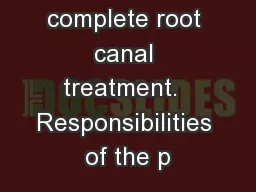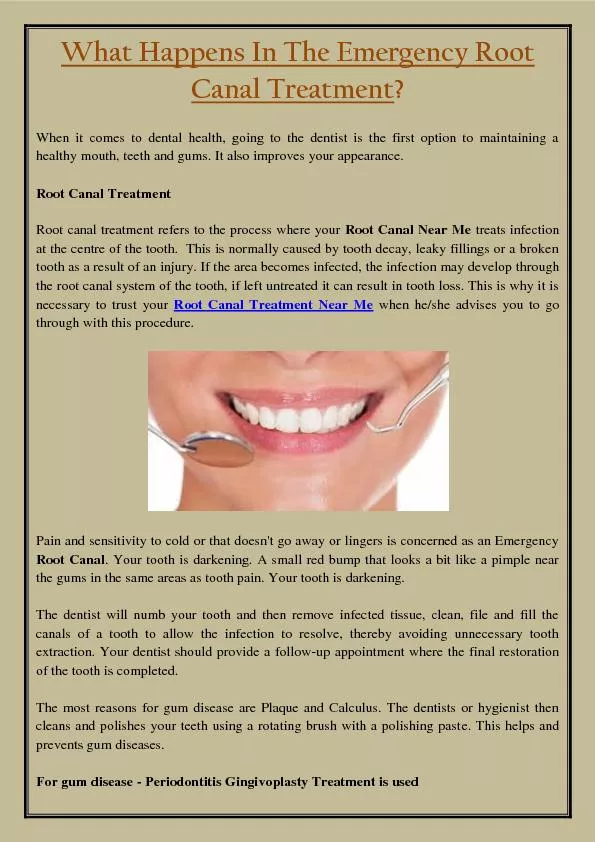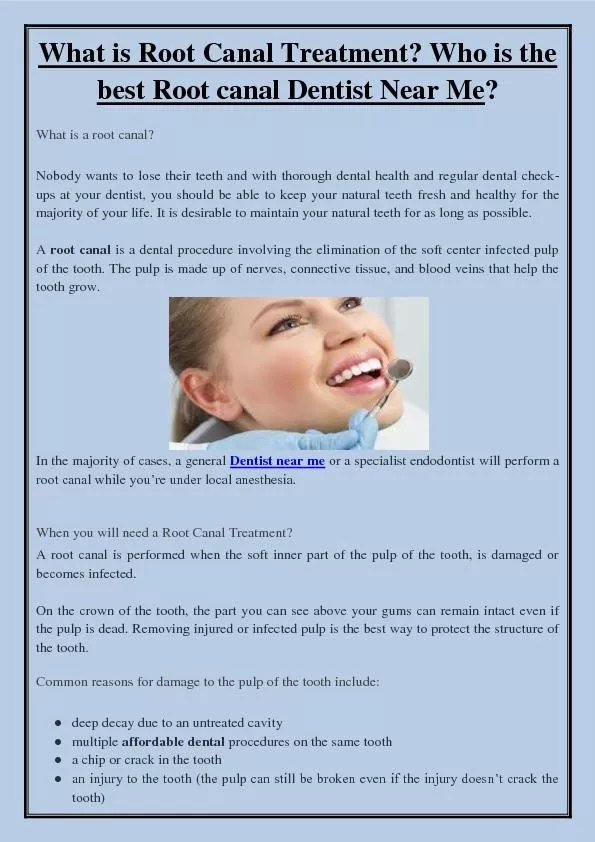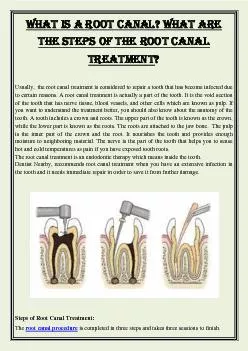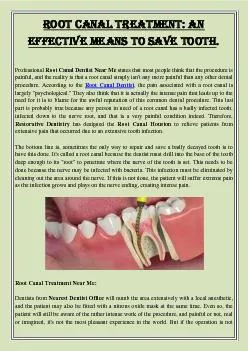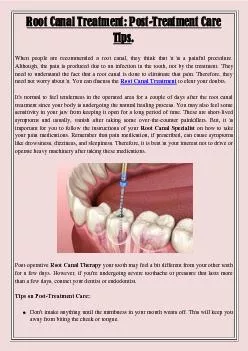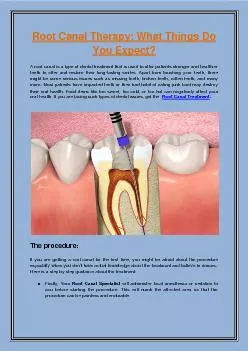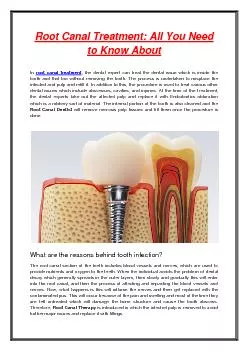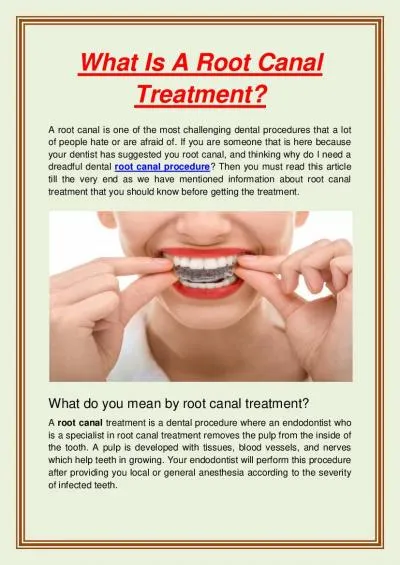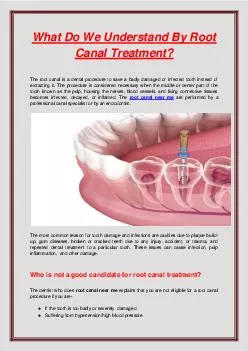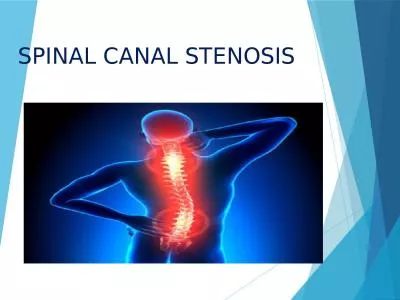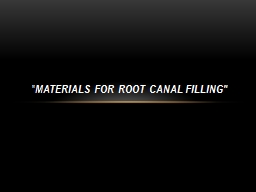PDF-Begin and/or complete root canal treatment. Responsibilities of the p
Author : karlyn-bohler | Published Date : 2015-08-17
periodontal ligament healing will compromise the ability to move the tooth with high elastic forces Expect 40 to exhibit pulp canal obliteration 40 to require root
Presentation Embed Code
Download Presentation
Download Presentation The PPT/PDF document "Begin and/or complete root canal treatme..." is the property of its rightful owner. Permission is granted to download and print the materials on this website for personal, non-commercial use only, and to display it on your personal computer provided you do not modify the materials and that you retain all copyright notices contained in the materials. By downloading content from our website, you accept the terms of this agreement.
Begin and/or complete root canal treatment. Responsibilities of the p: Transcript
Download Rules Of Document
"Begin and/or complete root canal treatment. Responsibilities of the p"The content belongs to its owner. You may download and print it for personal use, without modification, and keep all copyright notices. By downloading, you agree to these terms.
Related Documents

